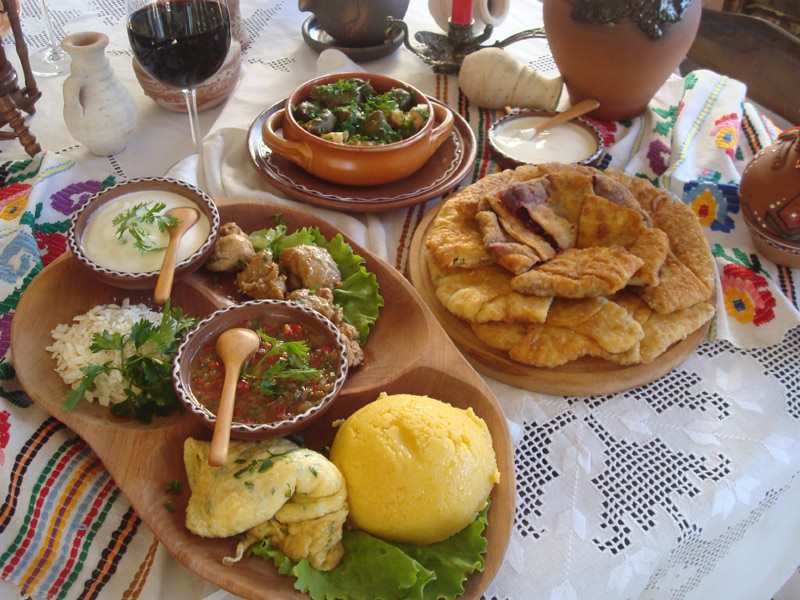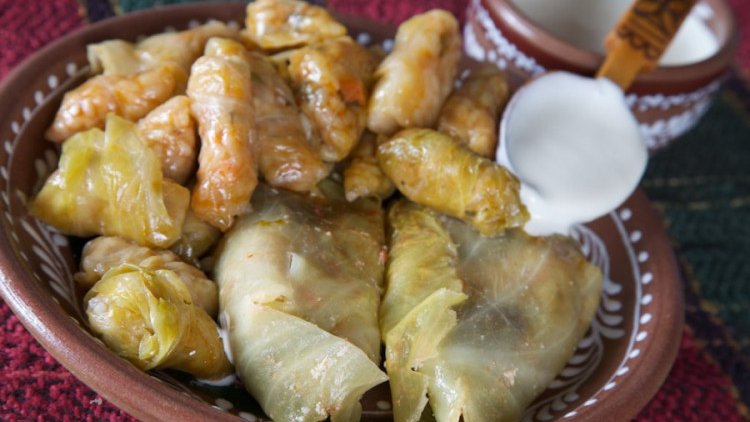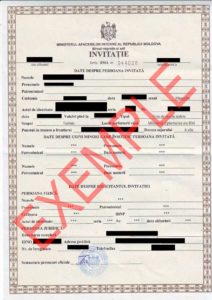Rural and Gastronomic Tourism.
The landscapes,cultural and tourist attractions,historical vestiges,gastronomic traditions and the hospitality of the Moldovans,are attractive elements of rural and gastronomic tourism in the Republic of Moldova.
The intangible cultural heritage which includes the folklore,traditions and customs,and the local crafts is highly leveraged within the rural tourism,offering visitors the opportunity to learn about the daily life of native people,the charm of holidays,to taste the traditional Moldovan cuisine based on local products,grown in ecological conditions,to enjoy horse and cart riding in summer,and sledge riding in winter,biking and hiking,tours to tourist attractions,cultural activities,etc.
The Moldovan cuisine is rich ,delicious and stands out by a great variety of dishes,well cooked and interestingly served,with balanced spicing,depending on the specifics of the place.


The Moldavian cuisine is very diversified from the point of view of the preparations. There is food specific to this region for appetizers, soups, main vegetables dishes, main meat dishes, deserts, conserves, pickles and others.
The ones preferring easy food shall find in the Moldavian cuisine many preparations based on vegetables, such as cabbage, vines, eggplants, beans, potatoes, green pepper, onion, leek, mushrooms, garlic. The meat addicts benefit of quite a feast with regard to the Moldavia gastronomy. The Moldavian tochitura is just an example.
Some meals, like “poale-n brau” pie are prepared during the whole year, regardless the occasion. But other preparations are specific to religious holidays and certain moments in an year. For Mucenici, for example, the housewives prepare “little princes” or Moldavian Mucenici, made of dough and walnuts.
The modalities of preparation of the Moldavian food are many, from baking to pickling, salting, smoking, roasting or suppressing. The meals prepared in such a manner are very tasty, but not necessary dietetic.
Moldavian traditional preparations.
The traditional dish represents one of the favourite appetizers of the Moldavian food lovers. The dish is prepared with smoked pork, smoked sausages, sausage prepared from swine’s entrails, bacon, cottage cheese, red onion, green and red pepper. Such an appetizer is generally served in different occasions and festive meals.
Moldavian Papara is made of scrambled eggs and porridge. This meal is prepared of eggs, corn, cream and sheep cheese.
Moldavian meatballs have an elongate form and they are ones of the most famous Romanian traditional meals. Besides their long form, in stead of round, the meatballs have a rich content of verdures, vegetables and aromatic plants. You can put carrots, parsley, dill, green onion, savory, garlic and of course, minced meat.
Moldavian soup is a type of soup specific to the Moldavian region. The preparation is made of vegetables , to which whey is added, than is served with green onion and fresh, chopped parsley.
Moldavian Borsch is a peculiar preparation, with a very special cooking technique. For the Moldavian borsch are used savory, cherry and celery and also wheat bran and corn. The borsch is used for the preparation of the soups known as meat borsch (usually chicken or hen), vegetables borsch etc.
“Dresala” is a soup specific to the Neamt region. The preparation is done with vegetables, cream, butter milk or whey, eggs, verdures and oil. The soup is usually served cold or almost cold, with green onion.
Moldavian “Sarbusca” is a soup made of milk whey, vegetables, corn and verdures. The preparation is also known as “nacreala” and it is served with porridge.
Moldavian Tochitura is a main course, prepared of pork meat, with porridge and egg, livers, sheep cheese and sausages.
Moldavian “Chisca” belongs to the traditional pork meat preparations, such as sausages. Bascially, the “chisca” is prepared of pork meat, onion and rise, which once prepared, are put into a pork bowel. After preparation, the new sausage has to be fried and served as main course. Other variants may contain also different ingredients, such as bacon, tomato sauce, chop etc.
Moldavian “Sfaraiala” is a preparation served as main course, based on beef. The meat is served with porridge, butter and cream.
Moldavian “Sarmale”( cabbage leaves stuffed with minced meat) represent one of the most known dishes of the Moldavian cuisine. These can be made of cabbage or vine leaves, stuffed with pork meat or mixed pork and beef, or even a mix of pork, beef and sheep. Also, the borsch is often used at the Moldavian “sarmale”.

“Poale-n brau” (pie) are the most popular pies, in Moldavia and also in the territory. The pies are usually stuffed with cheese, but there are also other stuffing options. After the dough is prepared and stuffed, the pies are put in the oven. Finally, the powder sugar is added. There are two well known variants of pies: the salt ones, served as appetizers and the sweet ones, served as desert. The preparation can be served either hot or cold.
Moldavian “Alivenci” is a desert specific to the Moldavian region. The preparation is made of cottage, corn, milk, wheat, eggs, butter and cream. The composition is put in the oven as a pie garnished with cream.
Mamaliga (mama-leegah) is the Moldovan equivalent of cornbread – a much wetter cornbread. Mamaliga (besides being a fun word to say) was a traditional peasant dish of Moldova and Romania, but is now very common and available in even high-end traditional restaurants. (It’s somewhat similar to Italian polenta.)

Mamaliga is made by boiling water, salt and cornmeal in a shallow cast iron pot with a curved bottom. It can be made two ways – thicker, where it can be cut into slices like bread, or softer, similar to the consistency of thick oatmeal. Since mamaliga is sticky and will stick to a knife when fresh, it is often cut with a sewing thread.
Typically this dish is served with shaved brinza (salty, homemade cheese) and meat or fish, but sometimes there’s sour cream or garlic on the side, or it’s crushed into a bowl of hot milk. It’s the perfect combination of hearty, salty and tasty, if done right and, most importantly, eaten fresh. If you want to taste Moldova, order fried fish, brinza, sour cream, garlic and mamaliga – it’s a unique combination of tastes and textures unlike anything else.
Zeama (Zama) is a traditional Moldovan soup made and eaten year-round, usually for lunch. I would say that the closest American equivalent is chicken noodle soup, but even your grandmother’s homemade version doesn’t reach zeama standards.
Zeama is light and flavorful, made with a chicken broth, noodles and a whole chicken (I’ve yet to have zeama at home where the chicken wasn’t fresh from the house). The soup also has lots of vegetables – finely-chopped onions, diced carrots, cubed potatoes, lots of parsley, some pepper and salt, and sometimes tomatoes or other spices.
This soup was my lunch almost every day of training but it was always perfect. It’s always served with a side of bread and salt, as is traditional on any Moldovan table. My favorite way to eat zeama is to dip in a cut-up hot pepper (for a little spice) and top the soup with a large dollop of sour cream.
Placinta the first time I tasted homemade, still warm from the pan placinta, I knew I would love living in Moldova.
Placinta (pronounced pla-chin-ta) is everywhere here. Its impossible to miss; in just about every alimentara (convenience store), it’s the equivalent of a 7-11 hot dog – a cheap on-the-go snack. But that’s just the storebought version; this traditional dish is also a staple in every masa (large celebratory meal) in Moldova.
Placinta is fried bread with filling, usually brinza (homemade cheese), varza (cabbage) or cartofi (potatoes). In the fall you see boston (pumpkin) placintas, in the summer with visine (sour cherries) and year-round you may find an an apple placinta or a meat placinta. Sometimes the brinza is mixed with sour cream to create an almost-paste as filling; sometimes brinza and cabbage are mixed, and sometimes in the summer the brinza is mixed with dill – my personal favorite filling.

The ratio of filling to bread, the thickness of the bread or dough used, whether it’s barely fried or deep-fried, the amount and type of filling all vary greatly, and getting them just right is what creates the perfect placinta. Store-bought placintas tend to be bready, almost like a circular and flatter croissant with filling in each layer of dough, but sometimes are simply deep-fried phyllo dough, almost like a large dumpling. Homemade placintas vary from ones with phyllo dough crusts that are almost spanakopita-like in texture and very light, to the more common flat, heavy placintas where dough is rolled out with filling placed in the center, then folded over and deep-fried.
Homemade, deep-fried, heavy placinta is the ultimate comfort food; cabbage and cheese is ideal as the temperatures drop into the winter, brinza and dill in phyllo dough is the perfect light summer meal and the corner store variety is perfect for a cheap and easy work pick-me-up lunch.
Wine & Gastronomy Theater (February).
This culinary event traditionally takes place in mid-February during the annual ExpoVin Moldova wine exhibition. During this event, the best chefs from Moldova, and also some foreign chefs, cook delicious dishes in front of an audience.
The food is paired with selected wines from local wineries exhibiting at the expo. Sometimes traditional dishes are prepared by local celebrities. Information about the Wine & Gastronomy Theater can be found here. Event date February 20-23, 2013, at Moldexpo Exchibition Centre.
Moldova Wine Festival (October).
The Moldova wine festival, officially named “National Wine Day”, takes place in Chisinau during the first weekend in October at the end of the grape harvest. The festival celebrates Moldova’s rich winemaking traditions, which date back to the 15th century.
During the festival, Moldovan wineries proudly display their wines in individual stands, often richly decorated in national style, and offer wine tastings to visitors. Guests can find a vast range of wine, from dry wines (reds, whites, and rosés) produced following the latest trends; to sparkling wines; to sweet, semi-sweet, and fortified wines; to rare “collection wines”, produced 10-20 years ago and stored in Moldova’s famous underground cellars. While wine is the main attraction, dozens of local restaurants and cafes offer traditional foods: grilled meats, placinta, other national dishes, fruits, and desserts. The festival also has plenty of local color, with traditional music and dance and people dressed in national costumes. Many vendors sell Moldovan handicrafts. Admission is free.
Bostaniada Festival.
Its first edition that took place on October 28, 2012 in Lozova village, Straseni was very much appreciated. The event promotes the culture of pumpkin consumption and the quality of traditional dishes cooked from fresh products. At the festival the pumpkin is presented under all possible functions and forms: fresh for sale, cooked in cold and hot dishes, as lighter, as decoration, as vesselsfor wine, as musical instrument etc.
The festival program includes: Gastronomy, Music, Handicrafts market and Fresh Frits & Vegetables market. The event takes place on Lozova’s central stadium by the October every year.


